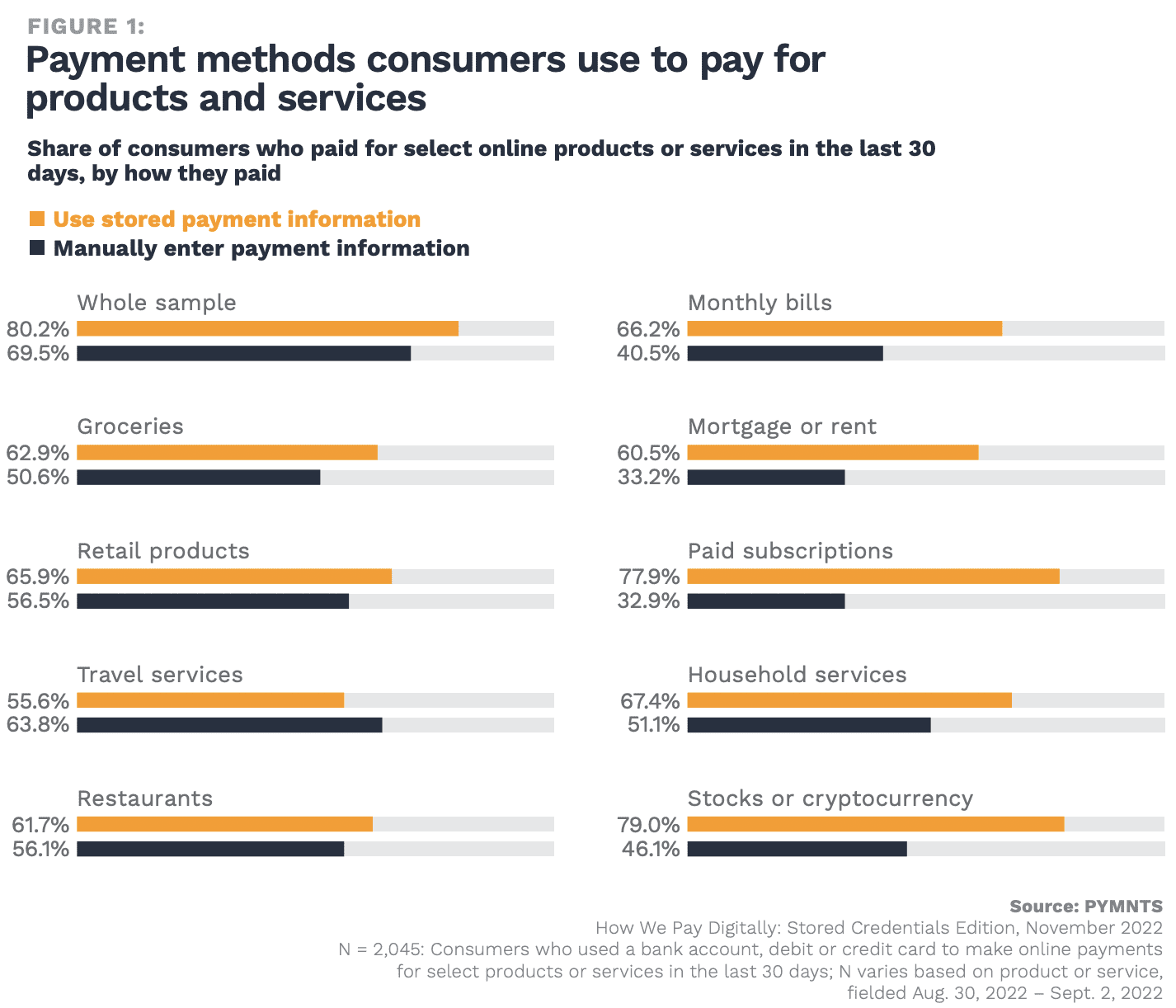
Consumers are increasingly using stored payment credentials to speed up the purchasing process, but not all types of purchases are experiencing adoption of the technology at the same rate.
For the PYMNTS study “How We Pay Digitally: Stored Credentials Edition,” created in collaboration with Amazon Web Services (AWS), PYMNTS surveyed more than 2,100 United States consumers in August and September to understand their purchasing behavior across industries.
While consumers generally expect their payment methods to be remembered online, travel purchases are the outlier, the study found.

Across most products or services, consumers are now accustomed to being able to pay with saved credentials online. For instance, 63% of eGrocery customers reported having made such purchases using stored payment information, a share exceeding the 51% that had done so with manually entered information. Similarly, 62% made digital restaurant purchases with stored credentials, while only 56% entered their credentials manually.
In the starkest disparity, 78% of those who made a subscription payment online in that one-month period did so using saved payment information, more than twice the 32% that did so by manually entering their information. This mix makes sense, given that central to the subscription model is the recurring payments aspect.
Across the nine different categories of products and services about which respondents were questioned, it is only in the travel services realm that using manual payments remains more common than using stored credentials, with 64% having made purchases via the former and just 56% via the latter.
“This could be due to the infrequency of those transactions or because consumers use different sites to book travel,” the report noted. “For all other segments covered in our survey, storing payment credentials in merchants’ and marketplaces’ websites and apps was by far the most-used method.”